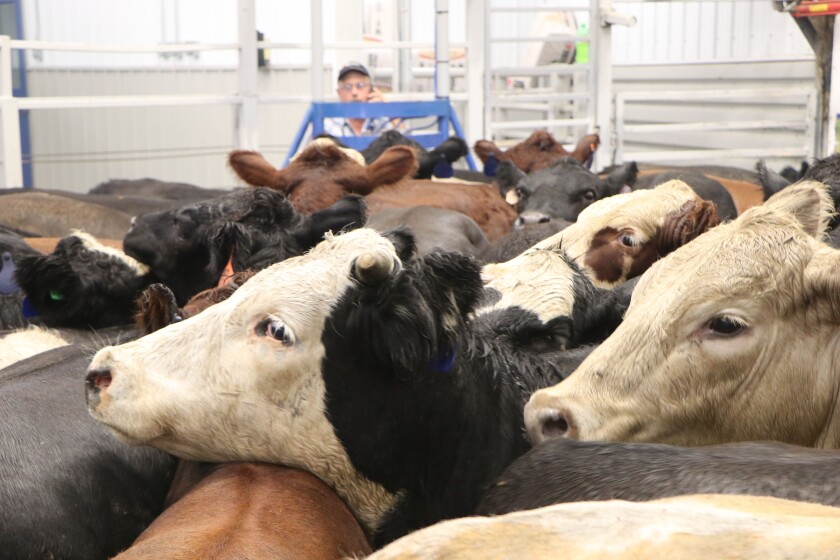Proactive Defense: Bagley Risk Management Tips
Recognizing Animals Danger Security (LRP) Insurance Policy: A Comprehensive Overview
Navigating the realm of livestock danger defense (LRP) insurance can be a complicated endeavor for several in the farming industry. From just how LRP insurance coverage operates to the numerous coverage options offered, there is much to discover in this thorough overview that can possibly form the way livestock producers approach threat management in their services.

Exactly How LRP Insurance Functions
Periodically, recognizing the mechanics of Animals Threat Defense (LRP) insurance can be complicated, yet breaking down how it works can give quality for farmers and ranchers. LRP insurance is a danger management tool developed to safeguard livestock producers against unforeseen cost declines. It's essential to note that LRP insurance coverage is not an income guarantee; rather, it focuses solely on rate risk defense.
Qualification and Insurance Coverage Options

When it comes to insurance coverage choices, LRP insurance coverage uses manufacturers the versatility to select the protection level, protection period, and endorsements that best match their threat monitoring demands. By recognizing the qualification requirements and protection choices offered, livestock manufacturers can make enlightened choices to handle danger effectively.
Pros and Cons of LRP Insurance
When evaluating Animals Threat Defense (LRP) insurance, it is vital for livestock producers to consider the negative aspects and benefits fundamental in this risk monitoring tool.

One of the main benefits of LRP insurance policy is its capacity to give protection against a decline in livestock prices. Furthermore, LRP insurance provides a degree of versatility, allowing manufacturers to customize coverage levels and policy durations to suit their specific needs.
Nevertheless, there are also some drawbacks to consider. One limitation of LRP insurance is that it does not safeguard against all sorts of risks, such as disease episodes or all-natural catastrophes. Premiums can in some cases be pricey, especially for manufacturers with huge livestock herds. It is vital for producers to very carefully evaluate their individual threat direct exposure and monetary circumstance to identify if LRP insurance policy is the appropriate danger management device for their procedure.
Comprehending LRP Insurance Policy Premiums

Tips for Making Best Use Of LRP Advantages
Optimizing the advantages of Livestock Risk Security (LRP) insurance policy calls for tactical planning and positive threat monitoring - Bagley Risk Management. To make the most of your LRP protection, think about the adhering to pointers:
Frequently Examine Market click over here Problems: Keep educated concerning market fads and rate fluctuations in the livestock industry. By keeping track of these elements, you can make educated decisions regarding when to buy LRP protection to safeguard against potential losses.
Establish Realistic Protection Degrees: When selecting protection levels, consider your production costs, market price of livestock, and potential threats - Bagley Risk Management. Establishing practical insurance coverage degrees guarantees that you are sufficiently protected without overpaying for unneeded insurance
Expand Your Insurance Coverage: As opposed to depending go to my site exclusively on LRP insurance policy, think about diversifying your risk management methods. Incorporating LRP with other danger administration tools such as futures contracts or choices can offer detailed protection against market uncertainties.
Review and Readjust Protection On a regular basis: As market conditions change, occasionally examine your LRP protection to ensure it straightens with your present threat direct exposure. Adjusting insurance coverage levels and timing of acquisitions can help maximize your risk defense strategy. By adhering to these suggestions, you can take full advantage of the advantages of LRP insurance and protect your livestock operation versus unforeseen threats.
Final Thought
In conclusion, livestock danger protection (LRP) insurance coverage is a valuable device for farmers to manage the monetary risks connected with their animals operations. By comprehending how LRP works, qualification and coverage options, in addition to the advantages and disadvantages of this insurance coverage, farmers can make enlightened choices to safeguard their source of incomes. By carefully thinking about LRP costs and implementing techniques to take full advantage of visit this site right here advantages, farmers can mitigate potential losses and guarantee the sustainability of their procedures.
Animals manufacturers interested in obtaining Livestock Danger Security (LRP) insurance policy can explore a variety of qualification standards and coverage choices tailored to their particular animals procedures.When it comes to insurance coverage choices, LRP insurance policy supplies manufacturers the flexibility to pick the insurance coverage degree, insurance coverage duration, and recommendations that finest fit their danger administration requirements.To comprehend the details of Animals Danger Protection (LRP) insurance coverage totally, comprehending the variables influencing LRP insurance premiums is essential. LRP insurance premiums are established by numerous components, consisting of the protection level chosen, the anticipated rate of animals at the end of the coverage duration, the type of livestock being guaranteed, and the size of the coverage duration.Testimonial and Change Coverage Frequently: As market conditions transform, regularly evaluate your LRP insurance coverage to guarantee it aligns with your existing danger exposure.